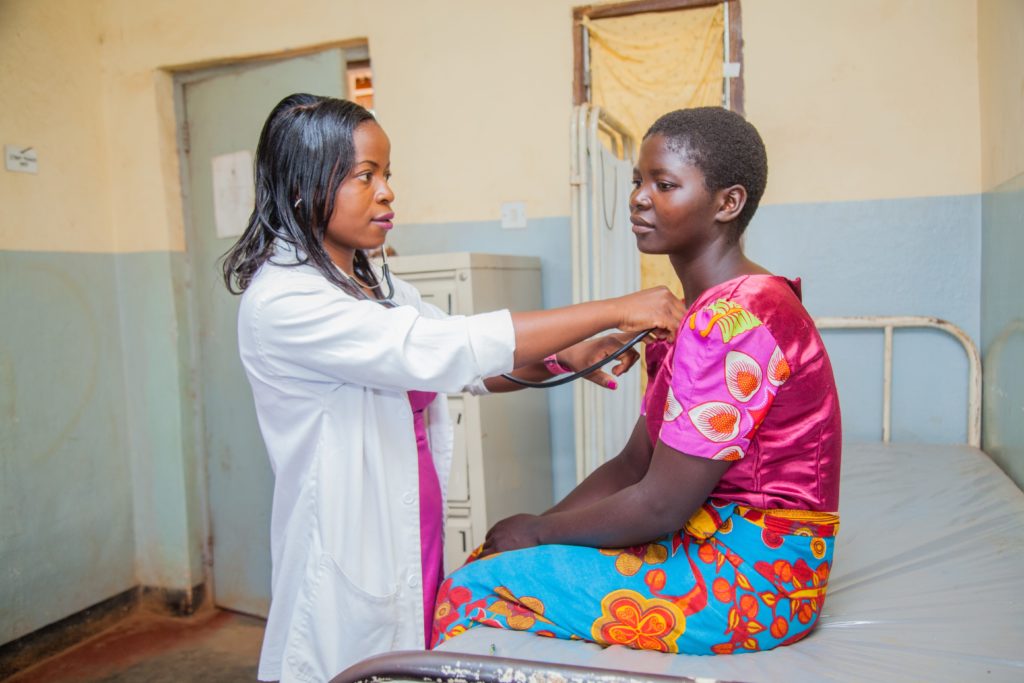Namibia
Namibia
Since 2006, we have worked with Namibia’s Ministry of Health and Social Services to address the high burden of HIV and TB by building local capacity for improved health care and improving access to quality, reliable, and cost-effective pharmaceutical products and services.
![[Pehovelo Ndahangoudja (left), a registered nurse documents feedback on CBART from Know your Status CASG member Julia Sheepo (2nd from right) and leader Marian Ndahafo Lilonga (right) at Ndamono clinic, Onandjokwe district.] {Photo credit: Stanley Stephanus for SIAPS Namibia}](https://msh.org/wp-content/uploads/2018/06/ndamono_clinic_onandjokwe_district_photo_credit_stanley_stephanus_for_siaps_namibia-web.jpg)
![[US Ambassador to Namibia, Thomas Daughton (seated) unveils the Facility Stock Card at the Okatana Health Center. The moment is witnessed by (from right to left) Oshana Regional Governor, Clemens Kashuupulwa , President’s Emergency Plan for AIDS Relief (PEPFAR) Country Director, Lela Baughman, MSH/SIAPS Country Director, Evans Sagwa and SIAPS Senior Technical Advisor, Bayobuya Phulu on July 13, 2017.] {Photo Credit: MSH/SIAPS staff in Namibia)}](https://msh.org/wp-content/uploads/2017/07/fesc-unveiling-web-815px.jpg)
Electronic Medicines Management in Namibia
In Namibia, managing and dispensing medicines was a mammoth manual task for hospital pharmacists. Patients, many of whom traveled from rural areas, often spent hours waiting for service. We introduced a district-level e-health system, based on an electronic stock card, that speeds the ordering, issuing, and receiving of pharmaceutical supplies and tracks stock status, leading to faster and more reliable access to medications. The system gives pharmacy staff more time to accurately procure and stock medicines and tend to patients. Along with an electronic dispensing tool that we also helped develop in Namibia, the electronic stock card drastically reduced patient waiting times at participating hospital pharmacies. In one hospital, in just one year, the wait time dropped to an average of 20 minutes—down from as long as 6 hours.
Overview
To support Namibia in its goal to achieve sustained HIV epidemic control, our programs have focused on accelerating the scale-up of high-impact HIV prevention, care, and treatment efforts; strengthening health services for orphans and vulnerable children; and improving the pharmaceutical system to enhance the availability of antiretrovirals, TB medicines, and other essential drugs at all levels of the public sector health system. Our programs have helped to build the capacity of the pharmaceutical workforce for antiretroviral service delivery; increase the use of routinely collected patient information to make programmatic decisions, such as achieving patient adherence to treatment; designing and analyzing financing options; and strengthening the Ministry of Health and Social Services’ governance and leadership of antiretroviral services.
Community-based Group ARV Dispensing Improves ART Services in Namibia
E-health Innovation Expedites Patient Dispensing Services in Namibia
Job Opportunities in Namibia
Join us as we help solve the world’s public health challenges through innovation, dedication, and technical excellence. We are looking for talented, passionate people to join us—as employees, consultants, and interns—in advancing our mission to save lives and improve the health of the world’s poorest and most vulnerable people.



